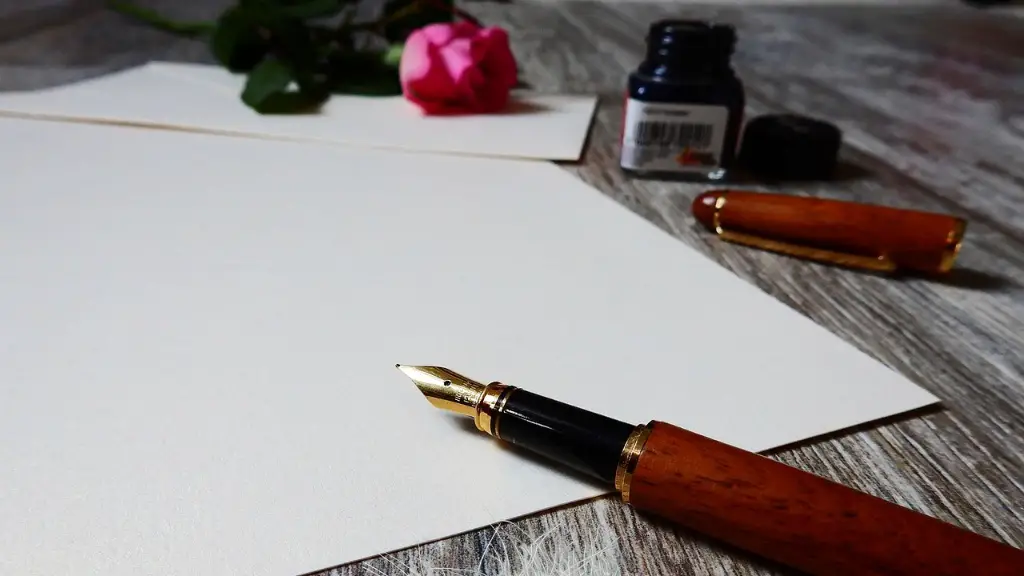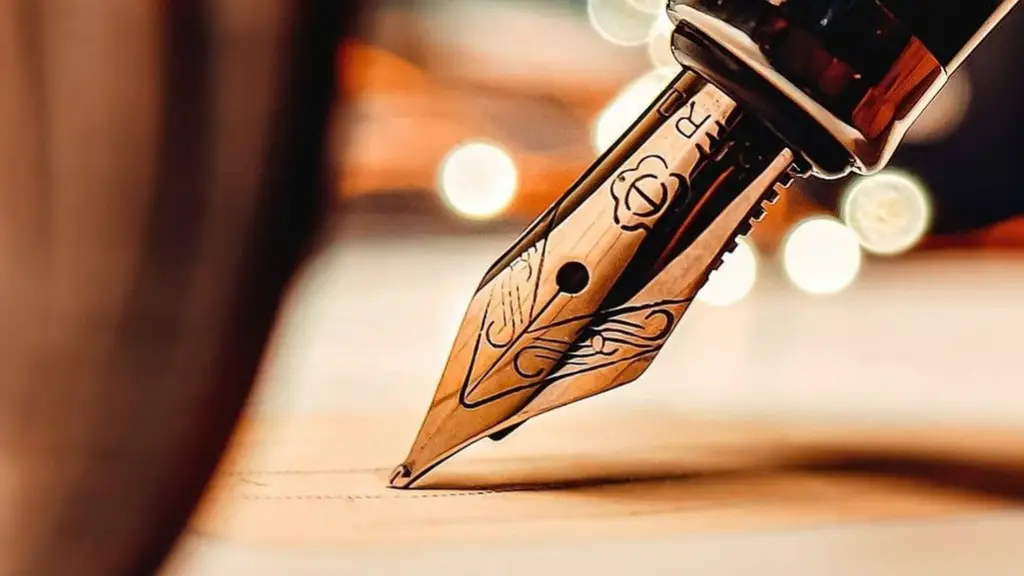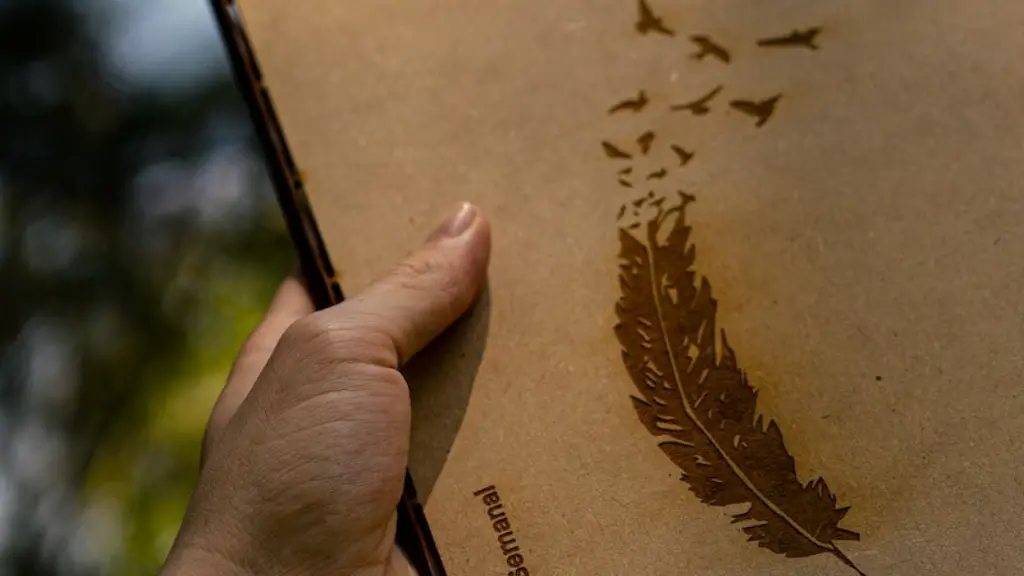What are metaphors in poetry?
Metaphors are powerful literary devices that are commonly used in poetry. They are a way of expressing abstract ideas descriptively, which can add a unique layer of complexity to your writing. Metaphors work by comparing an object to another thing that is seemingly unrelated, which can often lead to powerful and poignant pieces.
Metaphors are a closely related to similes, with the difference mainly being that metaphors do not need to use the words “like” or “as”, whereas similes do. Metaphors are used to paint a beautiful yet meaningful picture for the reader, often with the writer succeeding in finding analogies and ideas that have a stronger impact than if they were simply described with simpler words.
One of the most famous examples of a metaphor in poetry comes from William Blake’s poem “The Tyger”, which compares a dangerous and mysterious animal to the dark, unknown aspects of the universe. Famous lines such as “What the hammer? What the chain?” evoke a sense of tension and danger, highlighting the metaphorical overtones of the poem.
Metaphors are especially useful for addressing complex ideas. For instance, some popular metaphors used in poetry to discuss topics such as death include comparing it to sleep, a journey, and emptiness. Metaphors allow poets to communicate difficult topics in ways that are more emotionally resonant and poetic.
Metaphors are often used to explain and interpret things in a more engaging way. They can reinforce powerful concepts without fear of opinion. Not only do they intrigue readers, but they also give them a chance to explore deep and meaningful ideas that the author may not have the time or space to explore in intricacy.
What is the purpose of metaphors in poetry?
Metaphors in poetry serve a variety of purposes, but all generally serve to give the reader a greater understanding or perspective of the subject. Through metaphors, poets can express abstract ideas, convey difficult emotions, engage readers and bridge the gap between reality and fantasy.
When used thoughtfully, metaphors can help poets express emotions and ideas in an indirect and artful way. This can help readers to interpret the poem’s meaning with the help of small details and comparisons. In addition, metaphors can also provide a visual representation of an idea, filling a gap that words can’t create.
Metaphors can be used to bring the reader into a different perspective, allowing them to experience an idea more deeply. For example, poets often use metaphors to suggest ideas that are difficult to express in literal terms, such as when discussing death. The metaphors can help the reader to identify with the idea and better understand it.
Metaphors can also help to create a more vivid picture of a certain idea, making it more impactful and memorably. Poets can choose a metaphor that helps to capture the feeling and depth of a certain idea, allowing the reader to experience it fully.
Metaphors are also a great way to give the reader a feeling of awe and admiration. By utilizing analogies and comparisons, metaphors can make a topic seem more mystical and romantic, making it easier for a reader to connect with and appreciate.
How to effectively use metaphors in poetry
Using a metaphor in a poem requires a certain degree of skill, depending on how meaningful the end result is supposed to be. Metaphors should be used sparingly, chosen carefully and integrated in a way that supports the overall message of the poem.
It is important to remember that metaphors must not only be appropriate for the topic, but also effective. In other words, it is not enough to simply pick a metaphor – the metaphor must benefit the poem. For example, if a poet is trying to evoke a feeling of mystery, they may choose to compare two things that seem dissimilar, such as the night and a secret.
It is important to consider how the metaphor is used in the poem. The metaphor should convey the idea that the poet is trying to express and add to the overall message of the piece. Metaphors should be used in a way that enhances the poem, rather than add filler or bog down the poem’s rhythm or flow.
Metaphors should also be used in a way that makes them memorable. The best metaphors use vivid language and are cleverly integrated into the poem. For example, if a poet is alluding to a deep emotion, they may reference an event or object that is deeply personal or evocative.
Examples of Metaphors in Poetry
Metaphors can be found in almost all forms of poetry, ranging from love poems to haikus. Here are a few examples of metaphors in poetry:
The poem “Jabberwocky” by Lewis Carroll is full of metaphors. In the first stanza of the poem, Carroll uses the concept of a “vorpal blade” to metaphorically describe a weapon of great power:
“Twas brillig, and the slithy toves
Did gyre and gimble in the wabe;
All mimsy were the borogoves,
And the mome raths outgrabe.
“Beware the Jabberwock, my son!
The jaws that bite, the claws that catch!
Beware the Jubjub bird, and shun
The frumious Bandersnatch!”
“He took his vorpal sword in hand:
Long time the manxome foe he sought—
So rested he by the Tumtum tree,
And stood awhile in thought.”
In this stanza, the “vorpal sword” is a metaphor for a powerful weapon, which gives the poem a more romantic and mysterious tone.
What metaphors mean in poetry
Metaphors in poetry can be seen as a way of expressing abstract ideas and emotions in a way that is poetic and powerful. Metaphors can provide a vivid representation for concepts that would otherwise be difficult to explain.
Metaphors have been used for centuries to provide new perspectives and open a window to a different way of looking at the world. They are powerful tools for communicating difficult or abstract ideas in a way that is easier to understand.
Metaphors can also be used to give the reader a feeling of awe and admiration. Through clever use of metaphors, a poet can craft a vivid and impactful piece of writing without having to directly explain the emotions and ideas in a more literal sense.
Metaphors can be used to gain a greater understanding of a concept, as well as express emotions in an indirect way. By using metaphors to get the point across, a poet can achieve the same purpose without having to spell out the emotions or ideas they want to convey.
The use of metaphors in modern poetry
Metaphors are still a popular device in modern poetry, being used to express difficult emotions and ideas in a more poetic and meaningful way. Metaphors are often used in modern poetry to give the reader a greater understanding of the poem, providing insight into the thoughts and feelings of the poet.
Metaphors in modern poetry are often used to provide a visual representation of a certain idea or emotion. Poets often use metaphors to help evoke powerful feelings from the reader. By using metaphors, poets can connect to the reader on a deeper level, providing the reader a greater insight into the meaning of the poem.
Modern poetry also uses metaphors to explore deeper meanings and connotations. Poets use metaphors to suggest ideas that may be difficult to express in literal terms. Metaphors can be used to hint at topics and themes that are otherwise hard to address, allowing the reader to experience the poem in a more meaningful way.
Though there are still many traditional metaphors used in modern poetry, poets are now exploring new and more creative ways to use metaphor. Modern poets often draw on everyday life to create metaphors that are more meaningful and make their work more captivating.
The limitations of metaphors in poetry
Despite the many advantages of metaphors, there are still some limitations to their use in poetry. The main limitation is that metaphors can sometimes be too vague or obscure for readers to understand. If a metaphor does not have a clear meaning, it can detract from the overall impact of the piece.
Another limitation is that metaphors can be overused. If too many metaphors are used in a poem, it can become confusing for the reader, who may be overwhelmed with too many metaphors. Using too many metaphors can also make the poem clunky or incoherent.
Metaphors also require skill to use effectively, as they must be used in a way that supports the overall theme and message of the poem. If a metaphor is used in a way that does not achieve the intended purpose, it may end up detracting from the overall message and ruin the poetic effect.
Finally, metaphors may be too difficult for the reader to understand. Metaphors can often be tricky to decipher and require an understanding of the context in which they are used. If the reader is not familiar with the context or is not familiar with the type of metaphor being used, they may not understand the metaphor and thus miss the intended meaning of the poem.
Final thoughts on metaphors in poetry
Metaphors are a powerful tool that can be used to express difficult ideas and emotions in a more poetic and powerful way. When used properly, metaphors can provide a new perspective on a certain concept, allowing the reader to gain an understanding that wouldn’t


